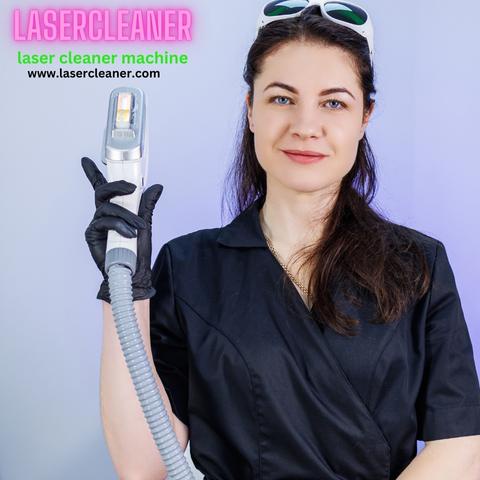In recent years, laser cleaner machines have emerged as a groundbreaking technology revolutionizing the way we clean various surfaces. From rust removal to paint stripping, these innovative devices offer efficient, eco-friendly, and precise cleaning solutions. In this guide, we'll delve into the workings of laser cleaner machines, their applications, benefits, and how to use them effectively.
Understanding Laser Cleaner Machines: laser cleaner machine utilize high-intensity laser beams to remove contaminants and unwanted materials from surfaces. These machines work on the principle of laser ablation, where the laser energy is absorbed by the surface contaminants, causing them to vaporize or break down into smaller particles, leaving the underlying surface clean and intact.
Applications:
- Rust Removal: Laser cleaner machines are highly effective in removing rust from metal surfaces without damaging the substrate.
- Paint Stripping: Whether it's automotive or industrial applications, laser cleaners efficiently strip paint layers without using chemicals or causing surface abrasion.
- Cleaning Historical Artifacts: Delicate artifacts and monuments can be safely cleaned using laser technology, preserving their integrity and aesthetic appeal.
- Surface Preparation: Laser cleaning is ideal for preparing surfaces for bonding, welding, or coating processes, ensuring better adhesion and quality of the finished product.
- Graffiti Removal: Municipalities and property owners use laser cleaners to remove graffiti from various surfaces without causing damage.
Benefits:
- Environmentally Friendly: Laser cleaning eliminates the need for harsh chemicals and minimizes waste generation, making it an eco-friendly cleaning solution.
- Precision and Control: Operators can precisely target the cleaning area, adjusting parameters such as laser intensity and beam size for optimal results.
- Non-contact Cleaning: Unlike traditional methods that involve abrasive techniques, laser cleaning is a non-contact process, minimizing the risk of surface damage.
- Cost-Efficiency: Although the initial investment may be higher, laser cleaner machines offer long-term cost savings by reducing labor, material, and disposal costs associated with conventional cleaning methods.
- Versatility: Laser cleaners can be used on a wide range of materials, including metals, plastics, ceramics, and historical artifacts, making them versatile tools for various industries.
How to Use Laser Cleaner Machines:
- Safety Precautions: Ensure proper training and use appropriate personal protective equipment (PPE) such as safety glasses and gloves.
- Surface Preparation: Clean the surface of any loose debris or contaminants before using the laser cleaner machine.
- Adjust Settings: Set the laser parameters according to the type of material and the extent of cleaning required.
- Test Spot: Conduct a test spot to determine the optimal settings and assess the effectiveness of the cleaning process.
- Cleaning Process: Move the laser beam systematically across the surface, overlapping each pass slightly to ensure thorough cleaning.
- Post-Cleaning Inspection: Inspect the cleaned surface to ensure the desired results have been achieved.
- Maintenance: Regularly maintain the machine by cleaning optics, checking alignment, and replacing worn components as needed.
Conclusion: Laser cleaner machines represent a significant advancement in cleaning technology, offering unmatched precision, efficiency, and versatility. By understanding their workings, applications, benefits, and proper usage, users can harness the full potential of these innovative devices to achieve superior cleaning results while minimizing environmental impact.


No comments yet